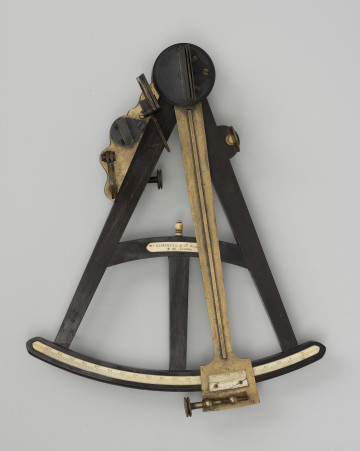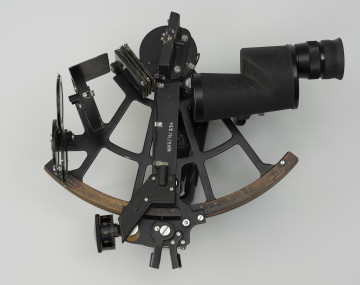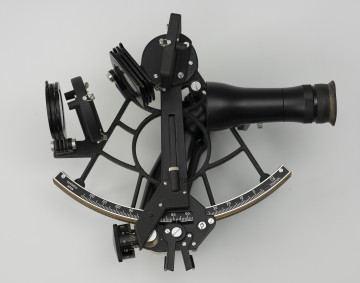
Octant
1816 — 1850
National Museum in Szczecin
Part of the collection: Navigation history
Invented by John Hadley (1682-1744), a British mathematician and inventor in 1731, the sextant remains essentially unchanged in its design to this day. This navigational instrument of a rather complex nature is used to measure the angular distance between two observable points. Its primary task in astronavigation is to measure the angle between the observed celestial body and the horizon, which, together with the time of measurement, is used to determine position lines on nautical and aeronautical charts. A sextant can be used to measure the height of a landmark and, based on this information, determine its own distance from it. However, in the horizontal position, it will serve to determine angles between objects located on maps, and the combination of angles between at least three such points will make it possible to determine the ship's position in relation to these points. The featured sextant, donated to the collection of the National Museum in Szczecin by the Polish Ocean Lines, was manufactured by the British company Kelvin & Hughes Ltd., founded in 1947. It was formed through a merger of the London-based Henry Hughes & Son Ltd. and the Scottish Kelvin Bottomley & Baird Ltd. Therefore, its origins go back to the scientific heritage of co-founder Kelvin Bottomley & Baird, the famous Lord Kelvin or rather William Thomson (1824-1907), mathematician, physicist, naturalist, inventor of an absolute zero scale, author of many technological inventions and improvements, including for instruments used at sea. On the other hand, it appeals to the watchmaking traditions of the Hughes family, which had supplied the London market with sextants and chronometers since the 17th century. Although the company was closed down in 1966, the Kelvin Hughes name was used as a division of Smiths Group plc. until the brand was acquired by the multinational corporation Hensoldt in 2017. Leszek Kocela
Author / creator
Object type
sextant
Technique
batch production, casting, industrial installation
Material
metal, synthetic material, brass, plastic, steel, glass, mirror
Origin / acquisition method
legal transfer
Creation time / dating
Creation / finding place
Owner
Muzeum Narodowe w Szczecinie
Identification number
Location / status

1816 — 1850
National Museum in Szczecin

1960 — 1970
National Museum in Szczecin

1983-02-28
National Museum in Szczecin
DISCOVER this TOPIC
Museum of King Jan III's Palace at Wilanów
DISCOVER this PATH
Educational path